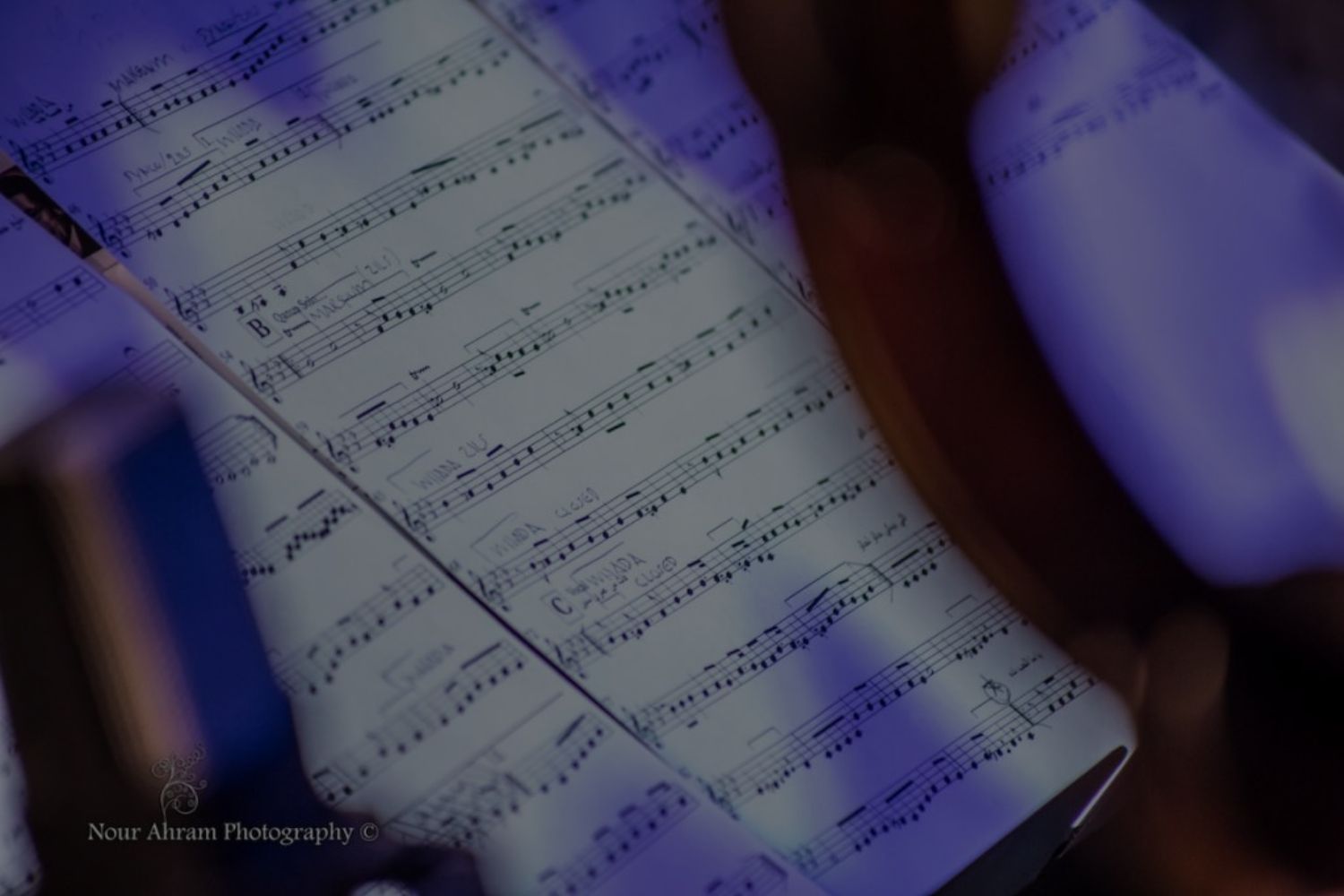COURSE DESCRIPTION
The course presents the theory and practice of the Arabic and Turkish modal system. The course emphasizes the function of the modal system in the different vocal and instrumental genres and the knowledge of the modal system in regards of playing and improvising on the instrument. The course also aims to develop the singing and aural skills of the student.
Level 1: is intended to students of oriental instruments between Grades 2-4. in this level students will gain basic knowledge of the maqam theory (the concept of 24 quarter tones, intervals, the basic tetra-chords, the concept of scale, tonal sequences, the basic modes (maqamat), the different attitudes to key signature, transposition), ability to identify the basic modes by ear and by study of written music, the function of the basic modes in simple vocal and instrumental genres.
Level 2: is intended to students of oriental instruments from Grades 5. In this level students will gain knowledge a wide variety of modes extended from the basic families and used in practice, a view of the main theory treaties of the Arabic and Turkish modal systems and the overlapping between the two systems, more features of the unfolding of modes (melodic progression, ambitus, alternative tetra-chords, texture, the concept of "modulation"...), the function of the modal system in the main vocal and instrumental genres, the ability to improvise in the different modes, basic knowledge of composition in the classical instrumental genres.
Level 1: is intended to students of oriental instruments between Grades 2-4. in this level students will gain basic knowledge of the maqam theory (the concept of 24 quarter tones, intervals, the basic tetra-chords, the concept of scale, tonal sequences, the basic modes (maqamat), the different attitudes to key signature, transposition), ability to identify the basic modes by ear and by study of written music, the function of the basic modes in simple vocal and instrumental genres.
Level 2: is intended to students of oriental instruments from Grades 5. In this level students will gain knowledge a wide variety of modes extended from the basic families and used in practice, a view of the main theory treaties of the Arabic and Turkish modal systems and the overlapping between the two systems, more features of the unfolding of modes (melodic progression, ambitus, alternative tetra-chords, texture, the concept of "modulation"...), the function of the modal system in the main vocal and instrumental genres, the ability to improvise in the different modes, basic knowledge of composition in the classical instrumental genres.
The course emphasizes the development of rhythmic, singing, and aural skills,
while stimulating the growth of the student's musicality. The method book used in the course was developed in the ESNCM and is grounded in western classical music, but in combination with the Arabic student's own heritage. For example we emphasise the use of traditional and popular melodies in the exercises; the use of Arabic words in connection with certain rhythmic formulas, and an introduction to the Arabic modal system. The theoretical outline for the different levels is as follows:
Level 1: introduction into staff, pitch and rhythm; Do(C) Major scale, Sol(G) and Fa(F) keys, introduction to the keyboard, half and whole steps, sharps and flats, tempo (Lento, Adagio, Andante, Moderato, Allegretto, Allegro, Presto), dynamics (fortissimo, forte, mezzo forte, piano, pianissimo), articulation (legato and staccato).
Level 2: Re(D), Fa(F) and Sol(G) Major scales, Melodic and Harmonic intervals (major and minor second, perfect first and eighth), Dissonance and Consonance, Key Signature, Repeats (repeat brackets, D. C. and D. S. al Fine).
Level 3: La(A) minor scale, Si(B) Flat major scale, Natural, Harmonic and melodic scales (Re(D) and Mi(E) minor), major and minor third intervals, perfect fourth and fifth intervals, Ritardando and Diminuendo, 8ve and arpeggio, Portato and Tenuto.
Level 4: Conducting patterns, Accent in Meter, Ornaments (Grace note, Turn, Mordent, Trill), Major and Minor Sixths and Sevenths Intervals, Interval Inversions, Chromatic and Diatonic Semitones, Enharmonic Tones, Double Flats and Sharps, Augmented and Diminished Intervals, Enharmonic intervals, Chromatic Scales, basic introduction to Maqam (Arabic Modal system), Half Flat and Half Sharp, Key signature in Maqams (Arabic Modes), Bayat, Hijaz, Rast, Ajam and Nahawand Modes.
Level 5: Major and Minor Scale, Circle of Fifths, Transposition, Compound Intervals, Major and Minor Triads and their Inversions, Augmented and Diminished Triads, Key, Scale Degrees, Melodic and Harmonic Functions, Cadences (Perfect, Plagal, Imperfect, Interrupted), Chromatic Tones, Modulation, Musical Texture, Musical form (AAB, AB, ABA, Theme and Variation), Kurd, Saba and Sikah Modes.
Level 1: introduction into staff, pitch and rhythm; Do(C) Major scale, Sol(G) and Fa(F) keys, introduction to the keyboard, half and whole steps, sharps and flats, tempo (Lento, Adagio, Andante, Moderato, Allegretto, Allegro, Presto), dynamics (fortissimo, forte, mezzo forte, piano, pianissimo), articulation (legato and staccato).
Level 2: Re(D), Fa(F) and Sol(G) Major scales, Melodic and Harmonic intervals (major and minor second, perfect first and eighth), Dissonance and Consonance, Key Signature, Repeats (repeat brackets, D. C. and D. S. al Fine).
Level 3: La(A) minor scale, Si(B) Flat major scale, Natural, Harmonic and melodic scales (Re(D) and Mi(E) minor), major and minor third intervals, perfect fourth and fifth intervals, Ritardando and Diminuendo, 8ve and arpeggio, Portato and Tenuto.
Level 4: Conducting patterns, Accent in Meter, Ornaments (Grace note, Turn, Mordent, Trill), Major and Minor Sixths and Sevenths Intervals, Interval Inversions, Chromatic and Diatonic Semitones, Enharmonic Tones, Double Flats and Sharps, Augmented and Diminished Intervals, Enharmonic intervals, Chromatic Scales, basic introduction to Maqam (Arabic Modal system), Half Flat and Half Sharp, Key signature in Maqams (Arabic Modes), Bayat, Hijaz, Rast, Ajam and Nahawand Modes.
Level 5: Major and Minor Scale, Circle of Fifths, Transposition, Compound Intervals, Major and Minor Triads and their Inversions, Augmented and Diminished Triads, Key, Scale Degrees, Melodic and Harmonic Functions, Cadences (Perfect, Plagal, Imperfect, Interrupted), Chromatic Tones, Modulation, Musical Texture, Musical form (AAB, AB, ABA, Theme and Variation), Kurd, Saba and Sikah Modes.
OTHER AVAILABLE PROGRAMS



